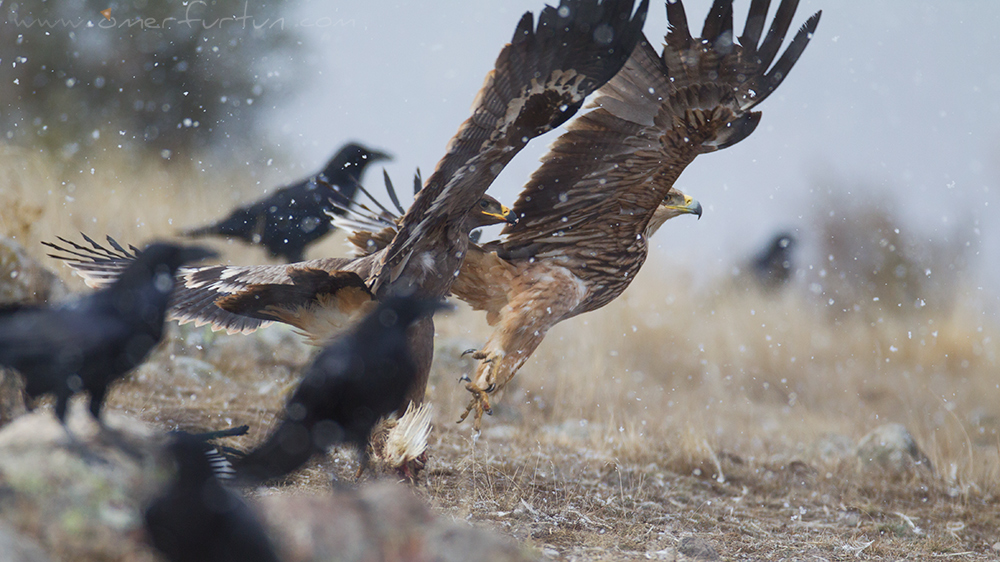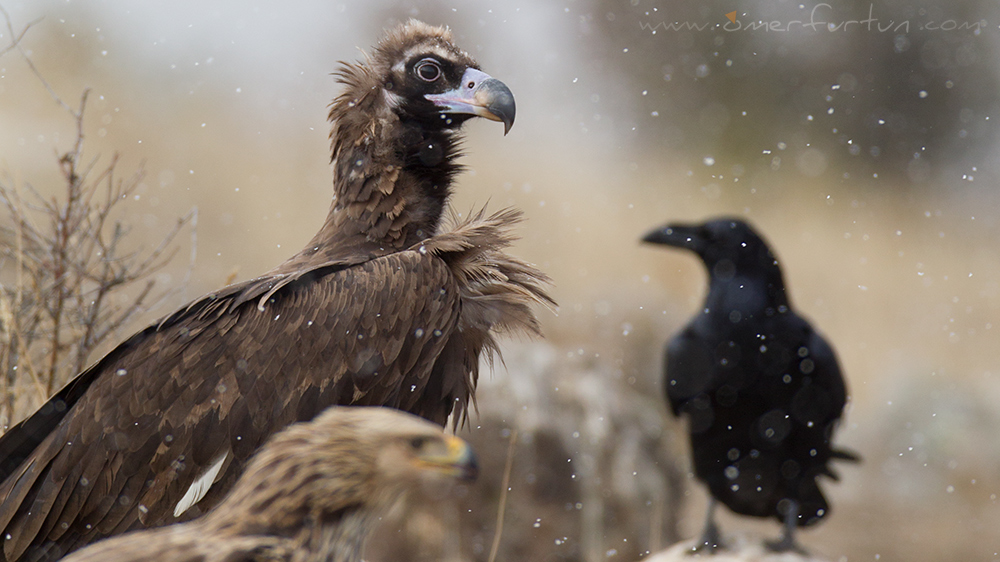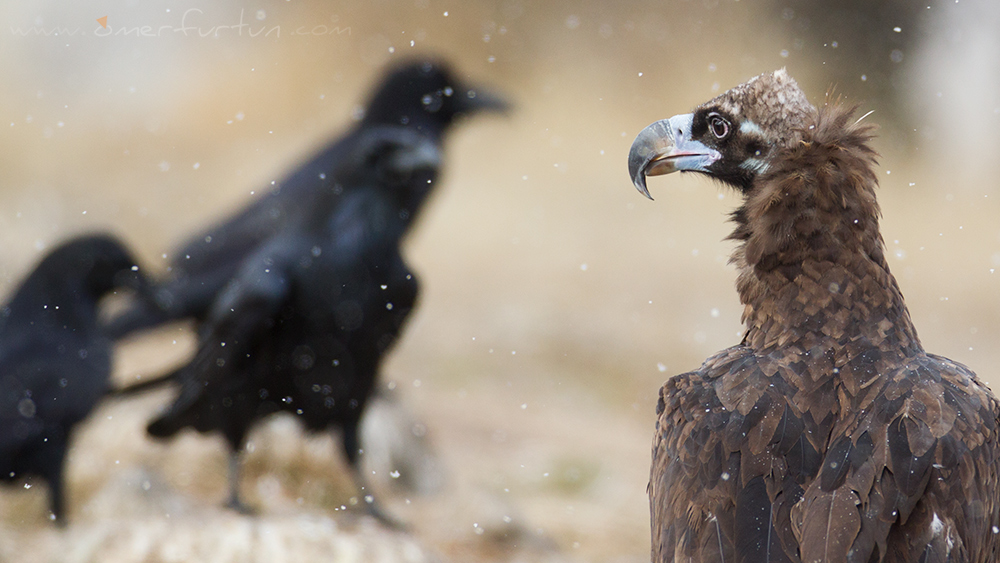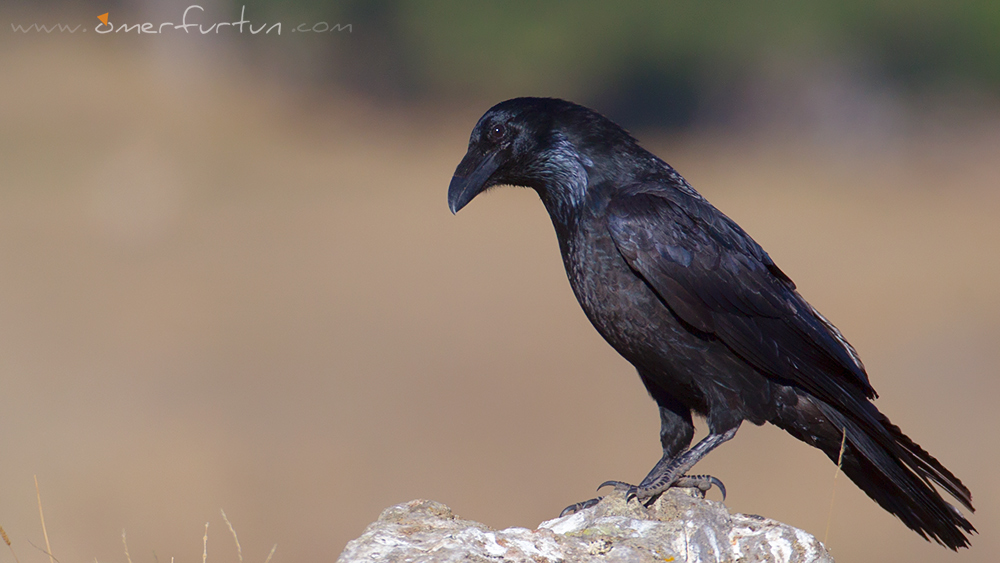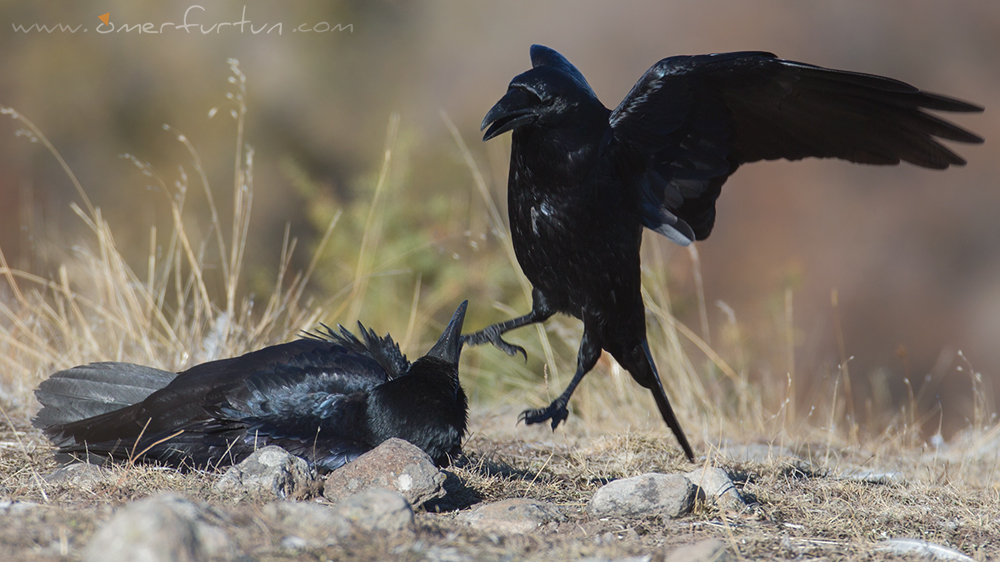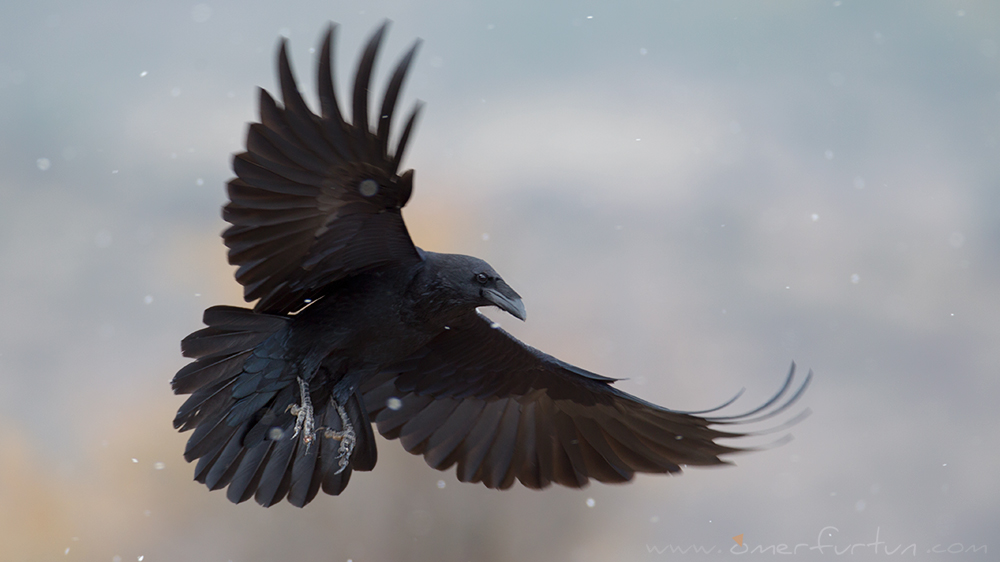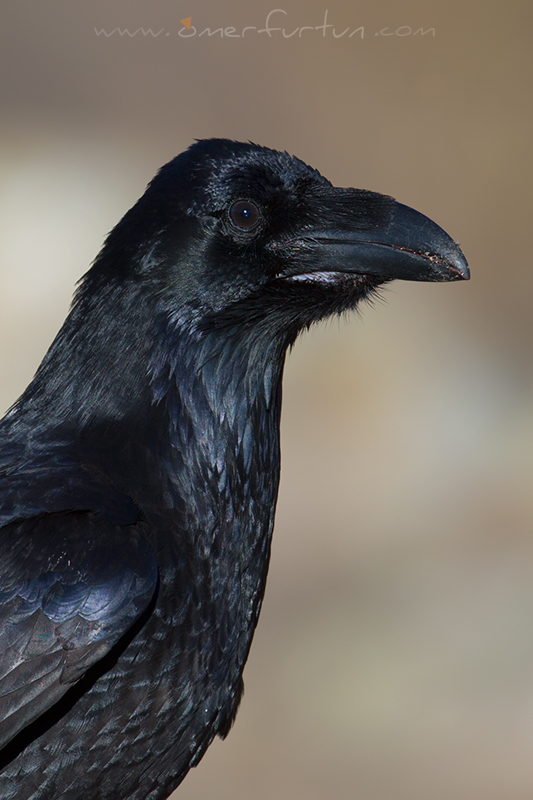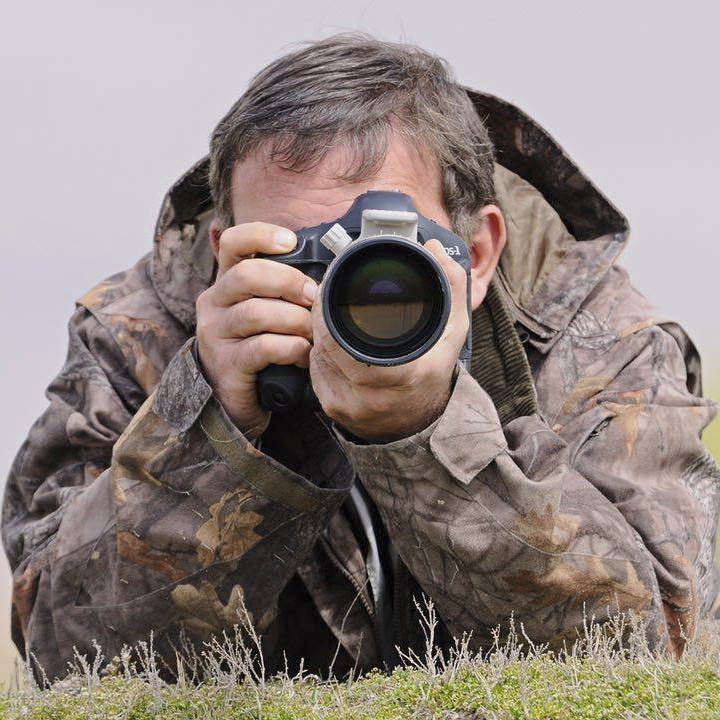He Is a Legend!
In the legends of the Haida, one of the indigenous peoples of North America, the Raven holds a very special place. The raven plays a crucial role in the creation of humankind. The legend of the Raven and the first human, which also takes center stage in Haida totems, begins with a great flood in Haida Gwaii (Queen Charlotte Islands).
200,000 Years Ago
Alone on the Rose Spit beach of Haida Gwaii, the Raven feasted on the shellfish left behind by the receding waters after the great flood. For the first time in its life, it was completely full—but it found no joy in it. There was no one left to tease with its tricks, no one to play with. The raven was utterly alone.
Its cries had barely stopped echoing over the beach when it suddenly heard a muffled sound. Scanning the shore with its sharp eyes, it searched for the source, but saw nothing. It took to the sky, circling once, twice, three times, four… yet still, it couldn’t find where the sound was coming from.
Then, out of nowhere, it noticed a glimmer on the sand. It was a massive shell, partially buried in the beach. As the raven’s shadow passed over it, the muffled sound came again. Peering into the slightly open shell, the raven saw it was filled with strange little creatures.
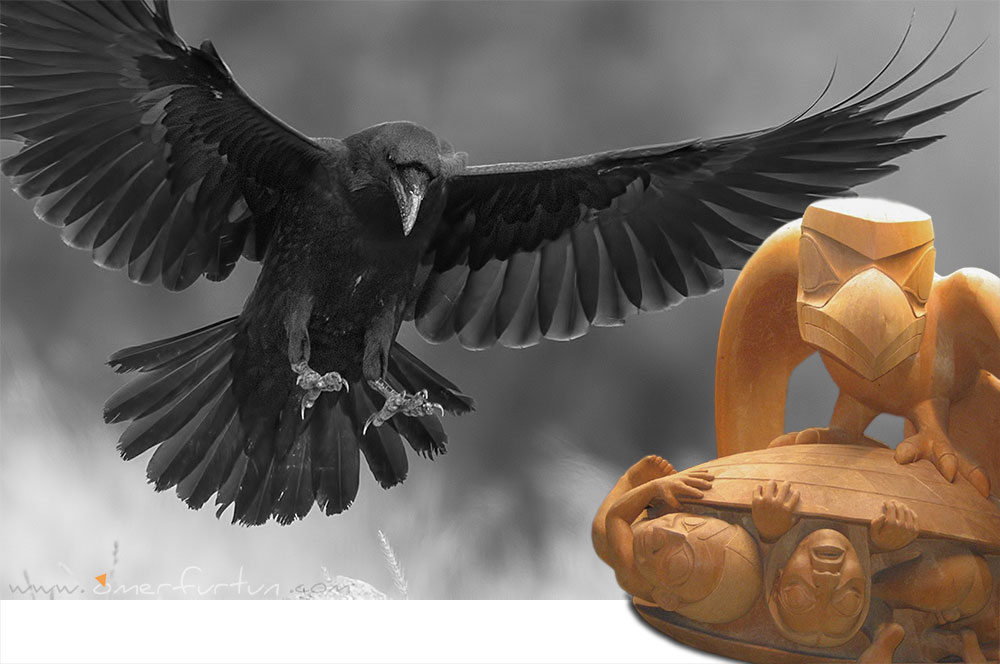
The Raven was delighted. A monotonous day had suddenly turned exciting. But the strange creatures hesitated, afraid to leave the shell. The Raven leaned closer, speaking to them in the sweetest voice it could muster, coaxing them into stepping into its beautiful world.
Before long, the creatures began emerging one by one. Some, upon seeing the Raven, panicked and scurried back inside, but in the end, curiosity won over fear, and all of them set foot in the raven’s world.
These odd beings had two legs, just like the raven, but that was where the similarities ended. Aside from a sparse covering of hair on their heads, they were completely bare. Instead of wings, they had strange appendages that were constantly in motion.
For a long time, the Raven played with them, teaching tricks and revealing cunning ways to navigate their new world. These ever-moving creatures sometimes helped one another but just as often quarreled over what they found. Eventually, growing weary of their endless energy, the legendary bird considered stuffing them back into the shell to be rid of them. But they were so helpless that it couldn’t bring itself to do it.
Still, it craved excitement. That’s when it noticed something curious—these creatures all looked the same. They were all male. Finding their counterparts would be an even greater adventure.
After much searching, the raven spotted large shells clinging to rocks, their thick lips sealed shut. Landing beside them, the Raven pried them open one by one. Inside, it found softer, rounder versions of the creatures it had already discovered. These must be the others—their missing counterparts.
Scooping them up, the Raven carried them back to the men.
At first, both groups were afraid of one another. The men briefly retreated into their shells, unsure of what to do. Both sides acted timid and shy, covering themselves with leaves they found on the beach. But as time passed, the men shed their fears and began showing off their skills, trying to impress the women by demonstrating the tricks the black bird had taught them.
Despite the initial awkwardness, pairs began to form. The men and women walked hand in hand, their contrasting natures complementing each other—the men, proud, swift, and strong; the women, delicate, gentle, and graceful. The Raven had never before encountered a species where the two sexes were so different from one another.
Watching these creatures—born from the shell’s strong muscles and soft lips—filled the Raven with fascination. From that day forward, it was never alone again. To aid the humans, it brought them the sun, the stars, the moon, fire, salmon, and the cedar tree.
AD 2014 – The Modern Era, Dörtdivan – Gerede
As the photographer focused on the wolves, vultures, and eagles, the ravens busied themselves with mischief. They did everything in their power to prevent him from capturing the perfect shot—taunting the raptors, chasing them away, and ensuring they always appeared in the most inconvenient spots in every frame.
Seeing a large flock of vultures descending towards the area, the photographer felt a surge of excitement. Things were about to get even more lively. However, the leader of the ravens—the many-generations-later descendant of the raven from Rose Spit Beach—was already onto them. With a sharp grraak, he alerted his gang. As one, they took off and flew straight toward the vultures, giving them no peace. They did everything in their power to drive the vultures away, forcing them to abandon their descent and retreat. Triumphant, the ravens returned to their perch on the rocks right in front of the photographer.
The photographer was frustrated. But he knew that the ravens’ carefree dominance had shaped every frame he had captured so far. He especially understood the vultures’ logic: “If the clever raven has landed, then it must be safe.” Vultures preferred to descend where ravens had already settled, trusting their judgment. This meant he had no choice—he could only take as many pictures as the ravens allowed.
Until they permitted other species to land, he decided to photograph the ravens instead. Watching them from behind his camouflage, he muttered, "Our ancestors really messed up by leaving you lot behind to plague the world." Yet, even as he complained, he couldn't help but enjoy them—their proud poses, their endless bickering, their mischievous scheming.
These black-feathered tricksters always found a way to be at the center of everything.
Other articles from the same day: The Red Hooded Photographer and Souls Rising to the Sun



